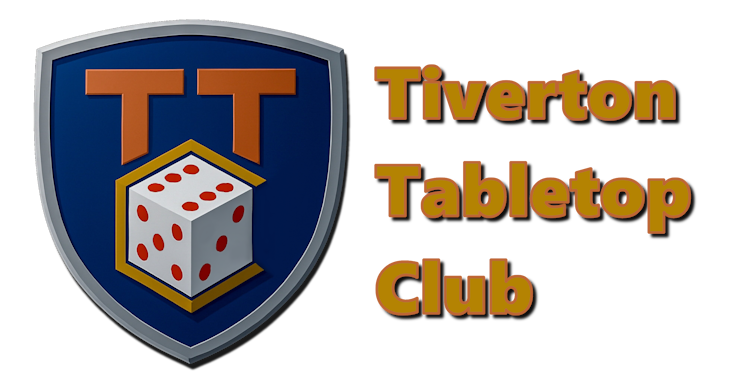This is the first in a few hobby related articles that I plan to write. I am a notoriously lazy painter, and have transitioned to pretty much only using GW Contrast paints as a once-and-done solution, but that is no reason to not have beautiful models with just a little care and colour theory.
For this, I will be referencing models that I have painted in the past, and then in the next couple of articles, progress to painting a new set of models for one of my Warmachine Armies.
First of all, why should you listen to me? I can’t say that I am amazing at painting, but I am eye catching, and I have actually won the painting prize at an event using my lazy methods! See!! (apologies for poorly focussed phone photo)
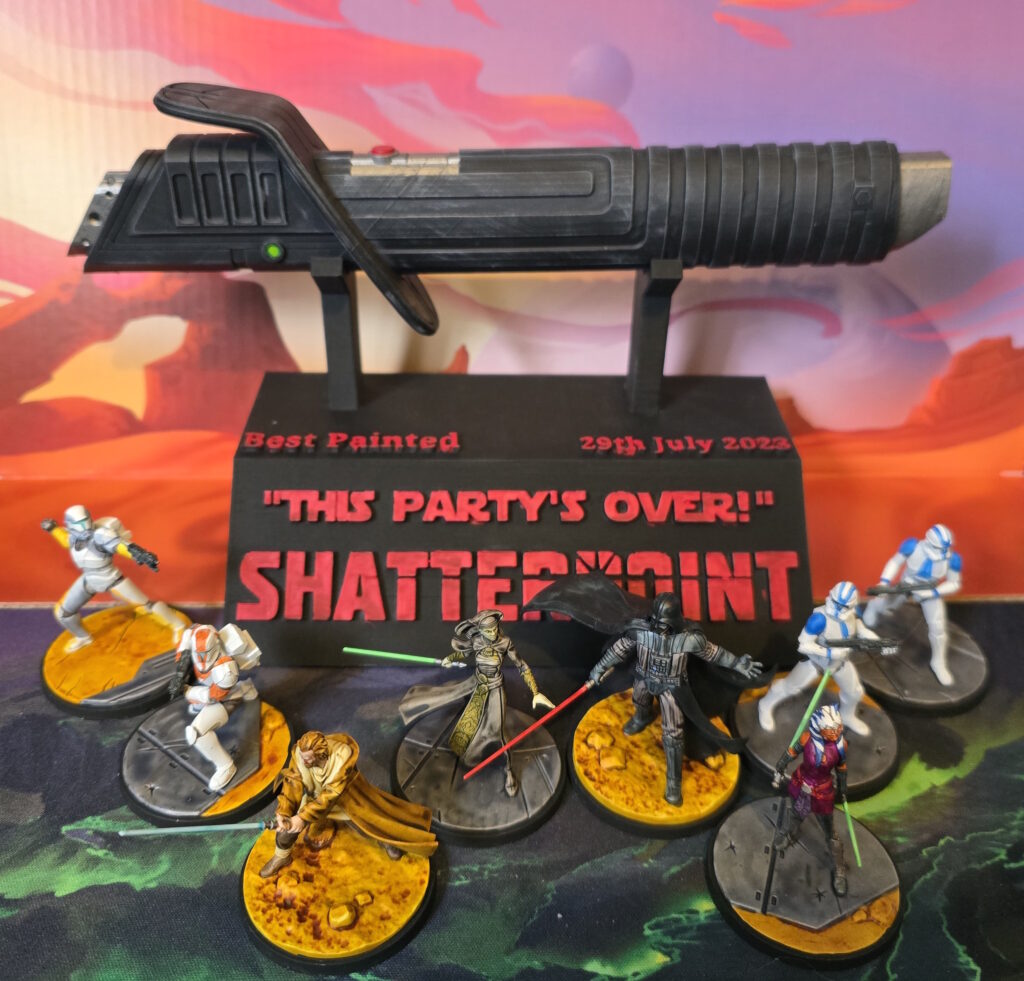
Yes, with Star Wars, you can’t really apply the ideals of “Choosing a Painting Scheme”, especially as a purist, as the colours are already defined. But there’s always a little wiggle room for tone and shade… in any case, those are my (dubious) credentials.
The first thing needed with deciding a colour scheme is an idea. For me this is often “Is there a colour that you want to use?”. For instance, with my Orgoth Sea Raiders Army I wanted to try something green – I hadn’t done a green army before. The next step is then “What colours work with that?”. Well, carrying on with the same thought process for the same Army, purple works well with green, and the green/purple combo is often associated with villains which works well for the setting. Red also goes well with green, but can look a little Christmassy (Looking at you Dark Angels with red bolters). So to combat that, lets slide the tone of the red into the purple and consider burgundy. As an extra step of validation, I then might look deeper into colour theory and use a tool like https://paletton.com/ and see where my colour ideas fall within a Triadic or Quadratic scheme. With a little playing around I can find a combination that fits together like this…
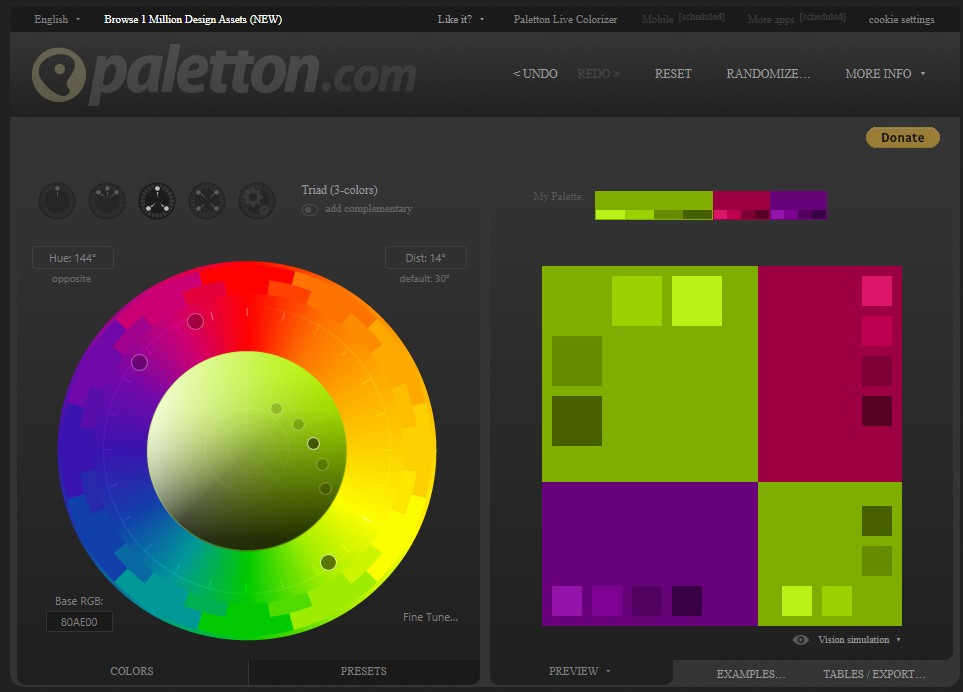
Of course, you can always just start with a colour you want to use, and then play with the colour wheel to see what also fits. Or even halfway through painting a model there might be a little doodad that you are unsure of – colour wheel! This is a very useful tool to take a large amount of colour theory knowledge and simplify it into a few buttons and sliders for everyone to use. But moving on, I can then take the above theme and apply it to the model with this eye catching outcome.
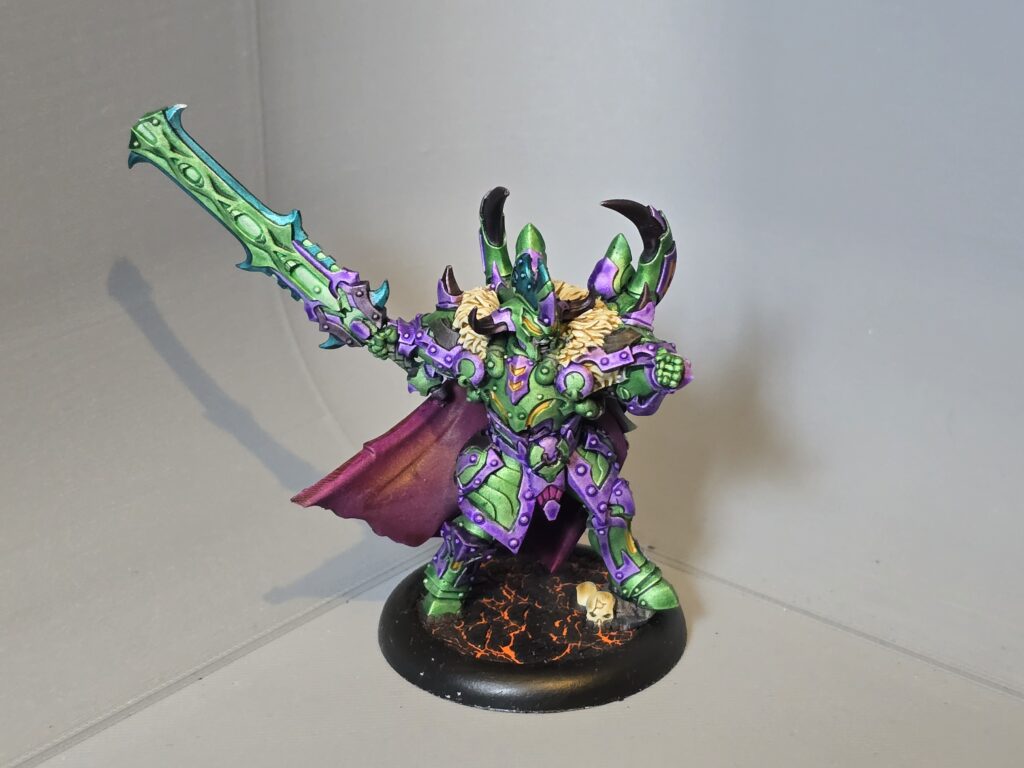
Now, I have skipped over a bit – its not as simple as then just slapping paint on and hoping for the best (though its not impossible to get a good result that way…). For a scheme to look good, in my opinion, it needs an internal consistency and logic. Especially if it is a military force, and not a hodgepodge militia, you need to have a way of applying the colours in a consistent manner that makes sense on some level. This can take some experimentation, and then referring back on future models. Using my Khador Winter Korps as an example:
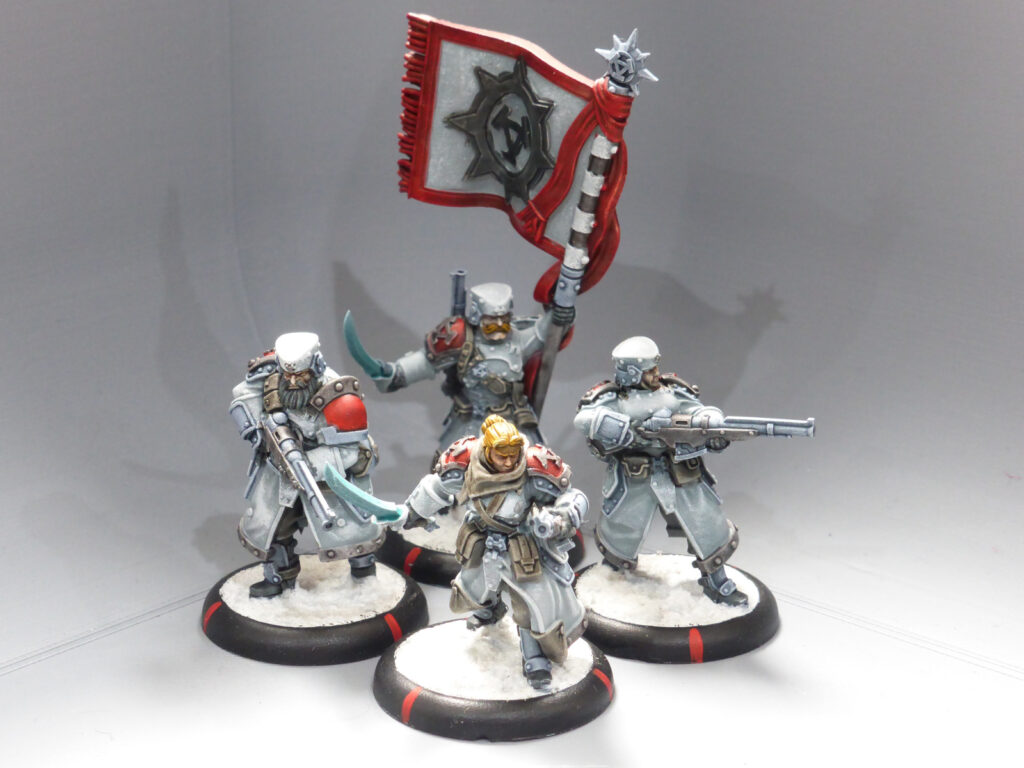
I will explain this scheme a bit more in a future article, but for now – it is snowy military attire.
Having the consistency to say I have three colours I use for “hard” armour; bare metal is Space Wolf Grey, armour trim and metal detail/reinforcing is Basilicanum Grey, armoured plates are pale grey dry brushed white. Once I have worked out the logic of what colour does what, I can easily pick up almost any model that I want to paint in this scheme and it still fits and looks cohesive. Sometimes you then have to make up or add new rules for the colour scheme for something to fit, but more often than not following an internal logic almost paints the model for you, and makes a believable and consistent look.
In my next article, I will go into more detail on my snowy paint scheme and logic, with examples from across the army, and then in the future I have both more models for my Khador from the 2 player starter set that work with, but exist outside of the command structure for the Winter Korps – so perhaps some slight deviations from my current scheme, to a whole new Khadoran army in the summer in the form of Old Umbrey who will share some elements, but also be very different.
